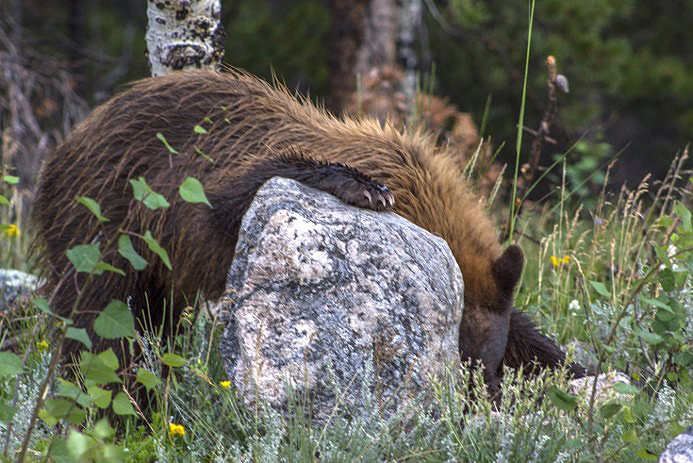 Keep Rocky’s Bears Wild!
Keep Rocky’s Bears Wild!
Rocky Mountain National Park’s goal is to keep black bears wild. Wild behavior includes browsing on chokecherries, clawing on downed logs to get to ants and other insects, scavenging deer and elk carcasses, and being fearful of humans. This is normal bear activity.
This natural lifestyle can be interrupted if they obtain human sources of food – even just once. Keeping bears away from human food once they’ve been exposed is a challenge because of bears’ unique biology. Bears have good memory and learn quickly. They can identify human food, packaging, even containers. They also will return to known food sources. As they associate people with food, they lose their innate wariness and can become increasingly aggressive. Once a bear has obtained these food rewards, it is very difficult to change their behavior.
Bears also have an incredible sense of smell, estimated to be seven times more sensitive than a bloodhound. The structure of the bones inside a bear’s nose has a surface area of mucous membranes more than 100 times larger than humans. This enables bears to locate attractants like food, sunscreen and trash several miles away.
Finally, bears need to eat. A lot. During the summer, a black bear will consume 5,000 calories of food a day. During the early fall, bears enter a state called hyperphasia when they will spend up to 20 hours a day foraging as they attempt to eat 20,000 calories a day to prepare for a winter in their dens.
The park has spent more than two decades installing bear-proof trash cans, recycling containers, and food storage lockers. This infrastructure only works if there is cooperation from park visitors. So, how can you help to keep bears wild?
Lock vehicle doors
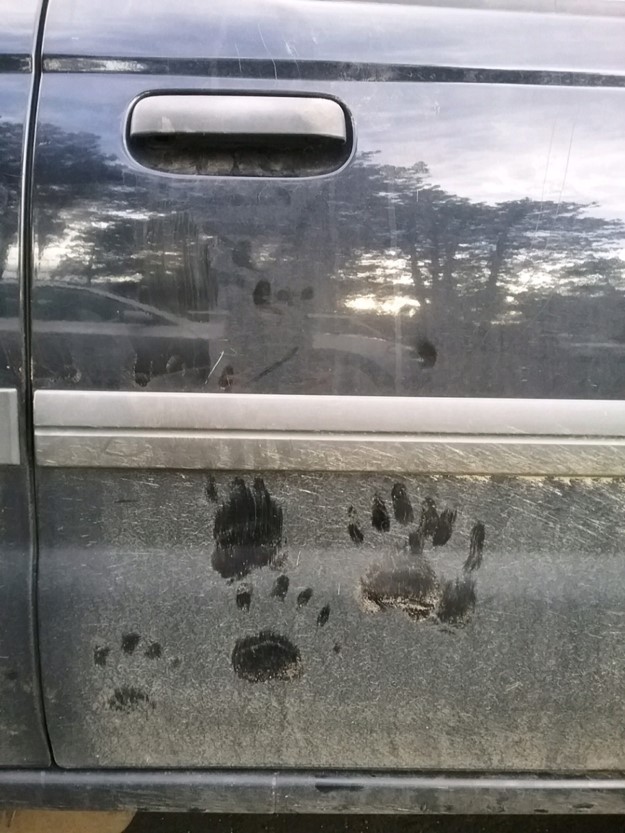

Securely store scented items day or night
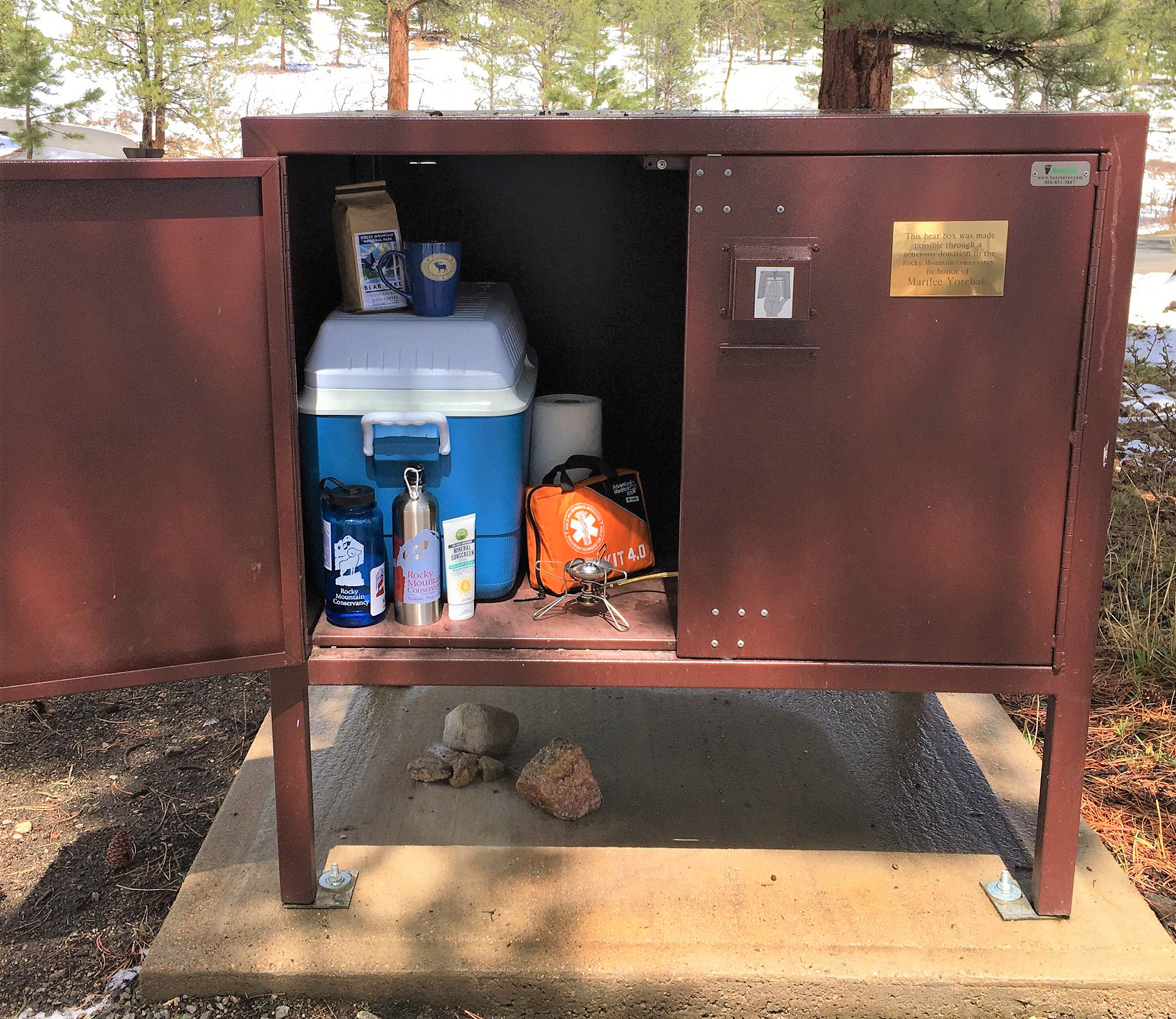

- Use a food storage locker. These food storage lockers are found in every campground and at selected trailheads. These storage lockers are big enough to fit multiple coolers and are designed to be shared. Appropriate for: campground visitors, overnight backpackers parking at Wild Basin, Longs Peak, and Fern Lake trailheads
- Keep food and other smellables inside the trunk of a vehicle. If your vehicle doesn’t have a trunk, place the items as low in the vehicle compartment as possible and covered from sight. Do not store food in a pick-up truck topper or tonneau cover. Always lock your doors and roll up windows. Appropriate for: day hikers, campground visitors, overnight backpackers parking at most trailheads.
- Use a hard-sided commercially produced bear canister. These are recommended year-round but are required April 1 to October 31 at backcountry wilderness camping sites below tree line and at the Boulder Field.
Appropriate for: backpackers and required for wilderness camping permits.
For more details on how to safely store food, visit here
Never leave food unattended
Whether you’re a day hiker, backpacker, or campground user, never leave food unattended – even if you’re just going from a picnic table to the bathroom.
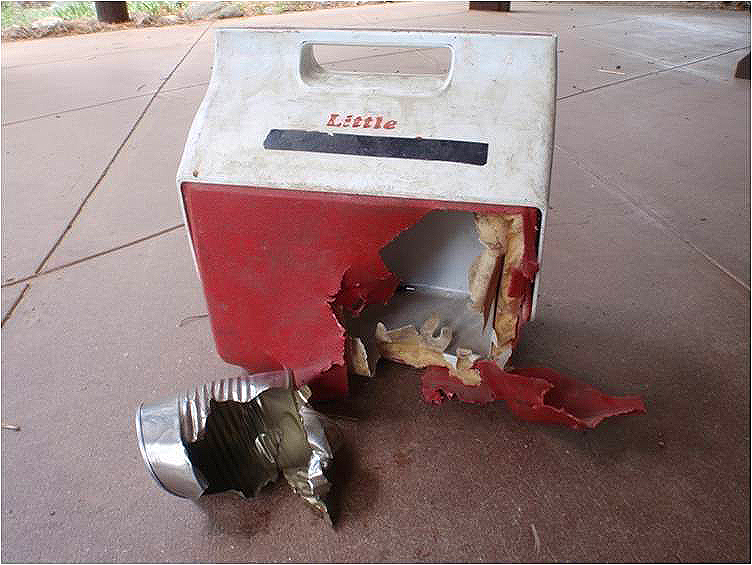

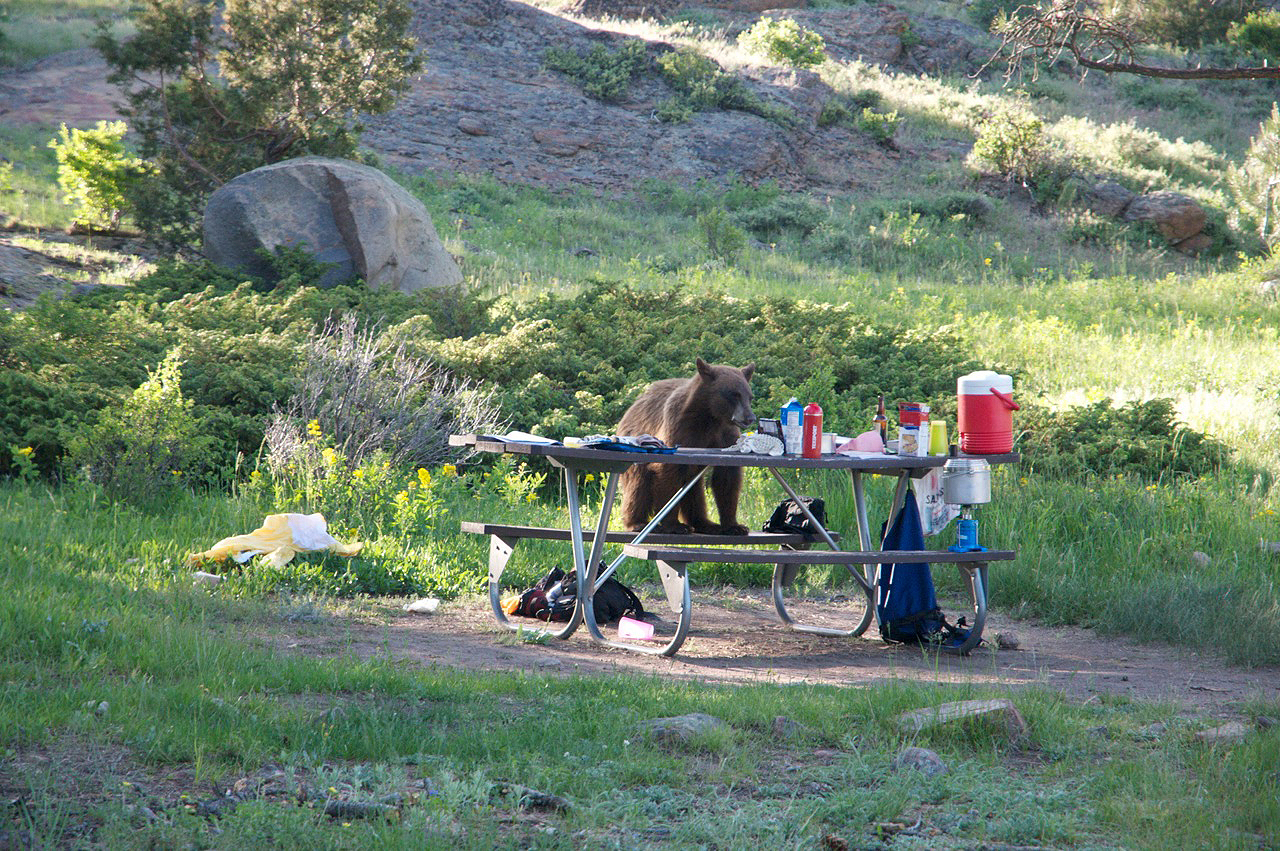

Keep your distance


Know how to respond to a black bear encounter
- Stay calm and pick up any children.
- Slowly walk backwards, keeping your eye on the bear.
- Give the bear an escape route. Make noise. If a bear stands up, the bear is just trying to identify you.
If the bear approaches:
- Stand your ground and yell.
- Throw rocks toward, but not at the bear.
- If the bear makes contact and attacks, fight back!
- Report all bear encounters to a park ranger or campground host.
Remember: It takes all of us to keep Rocky bears wild.
To support wildlife research and protection in Rocky Mountain National Park, give a gift to the Rocky Mountain Conservancy’s Wildlife Fund today. Donate and select “Wildlife Conservation” in the dropdown list.
by Chris Clatterbuck
RMNP Natural Resources Program Manager

